The passage of the Tax Cut and Jobs Act in December 2017 has created a number of new opportunities (and challenges) for companies and individuals alike. Forbes magazine calls the legislation “the biggest tax bill in 31 years” since President Ronald Reagan’s Tax Reform Act of 1986.
Fortunately, businesses that understand the intricacies of the Tax Cut and Jobs Act will be well-prepared to take advantage of its terms as they prepare their 2018 tax returns. This article will discuss 5 of the top strategies that you might be able to benefit from under the new business tax landscape.
1. Choice of Entity
The Tax Cut and Jobs Act slashes the corporate tax rate from 35 percent to 21 percent. This means that many business owners whose companies are currently set up as pass-through entities (i.e. S corporations, partnerships or LLCs) or sole proprietorships might want to consider converting to a C corporation.
Under the Tax Cut and Jobs Act, income from pass-through entities and sole proprietorships are subject to tax at the owner’s higher individual tax rates (up to 37 percent). On the other hand, the same income in a C corporation would only be subject to tax at 21 percent.
In the case of a C corporation, however, there will be a second level of tax once the earnings are actually distributed to the owners because these distributions are considered dividends. Therefore, this strategy would make the most sense for businesses that continually reinvest their earnings instead of paying them out to the owners.
2. Pass-through Entity Deduction
Section 199A of the Tax Cut and Jobs Act allows the owners of pass-through entities a 20 percent deduction for the qualified business income (QBI) generated by their business, provided that they meet certain requirements.
In order to meet the definition of a “qualified business,” you cannot be in certain service-based industries, such as law, medicine and accounting. Taxpayers whose income is below certain thresholds are entitled to claim this deduction without being subject to any limitations, even if they are in one of the aforementioned service-based industries. However, the 20 percent deduction for those taxpayers whose income is above these thresholds is subject to a few limitations.
One such limitation is based on wages paid by the business. There are significant planning opportunities here, especially for businesses that use independent contractors instead of employees, and thus have no wages. Changing your business model to convert these contractors to employees to generate wages could open the door to claiming the 20 percent deduction.
If it isn’t practical for you to “create” wages in the business, there is another limitation based on the original cost of depreciable property that you own and use in the business. Again, depending upon the industry, there may be planning opportunities for acquiring new depreciable property which could allow for the 20 percent deduction.
3. Expanded Section 179 Expensing
Generally speaking, the cost of fixed assets purchased for use in a trade or business must be recovered over the asset’s useful life (through depreciation deductions). Section 179 of the U.S. tax code now allows eligible taxpayers to immediately deduct up to $1,000,000 of the cost of qualifying assets placed in service during a tax year.
Prior to the passage of the Tax Cuts and Jobs Act, qualifying property for purposes of Section 179 generally included only tangible personal property (i.e., machinery, equipment, computers, furniture & fixtures, etc.), as well as certain qualified real property with a class life of fewer than 20 years.
However, the Tax Cuts and Jobs Act expanded the definition of qualified real property to include roofs, HVAC systems, fire protection and security systems and tangible personal property used predominantly in furnishing lodging.
4. Overall Accounting Method
There are two main accounting methods that you can use to calculate taxable income: the accrual method and the cash method.
- Under the accrual method, taxpayers recognize income when it is earned and recognize expenses when they are incurred and the liability is fixed.
- Under the cash method, taxpayers report income when the cash is actually received and expenses when the cash is actually paid.
The amount of your net taxable income can significantly vary under the two methods, depending upon the magnitude of your accounts receivable and accounts payable.
Prior to the Tax Cuts and Jobs Act, taxpayers involved in the purchase, production or sale of merchandise could not use the cash method of accounting for tax purposes. However, the Tax Cuts and Jobs Act enabled many taxpayers—including those involved in the purchase, production or sale of merchandise—to utilize this method.
For tax years beginning after 2017, any entity (other than a tax shelter) whose three-year average annual gross receipts are $25 million or less can use the cash method of accounting.
5. Business Interest Expense Limitation
Beginning in the 2018 tax year, all businesses (except those with average annual gross receipts of $25 million or less for the last three years) will have limits on the deductibility of their business interest expense.
Business interest expense over 30 percent of the business’s “adjusted taxable income” will be disallowed. Adjusted taxable income for this purpose is defined as taxable income computed without the deductions for interest, taxes, depreciation and amortization—essentially EBITDA. Interest expense disallowed under this provision will be carried forward indefinitely, available for deduction in future years (subject to the limitation above).
Many real estate businesses that are subject to this limitation may have some opportunities available to them. The Tax Cuts and Jobs Act allows you to “trade” accelerated depreciation deductions, including bonus depreciation, in exchange for having no limitations on the deductibility of your interest expense (provided that you make an irrevocable election).
WilkinGuttenplan Can Help Your Business
Although the Tax Cuts and Jobs Acts poses new questions and challenges for businesses, being well-informed about the new provisions of the legislation is the first key to a strong tax strategy. To receive the latest updates and resources about the world of accounting, follow WilkinGuttenplan for more information.





